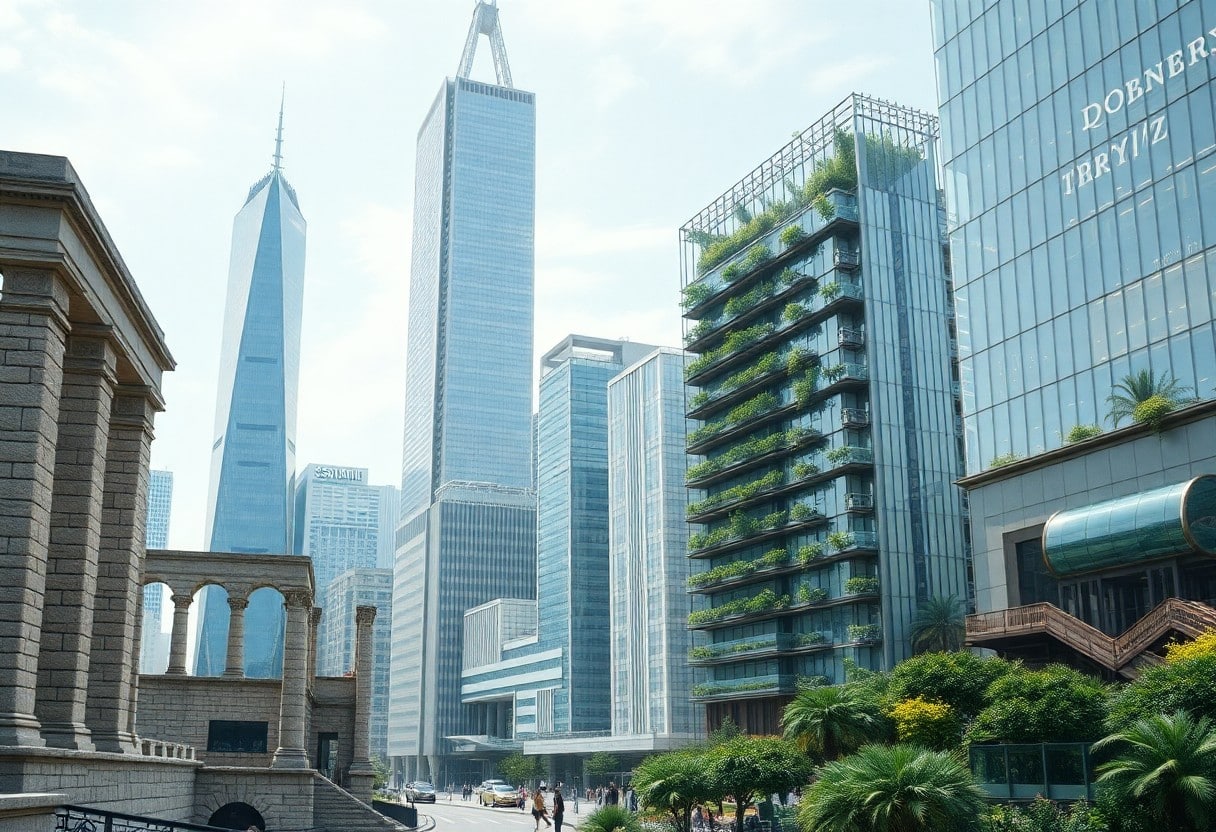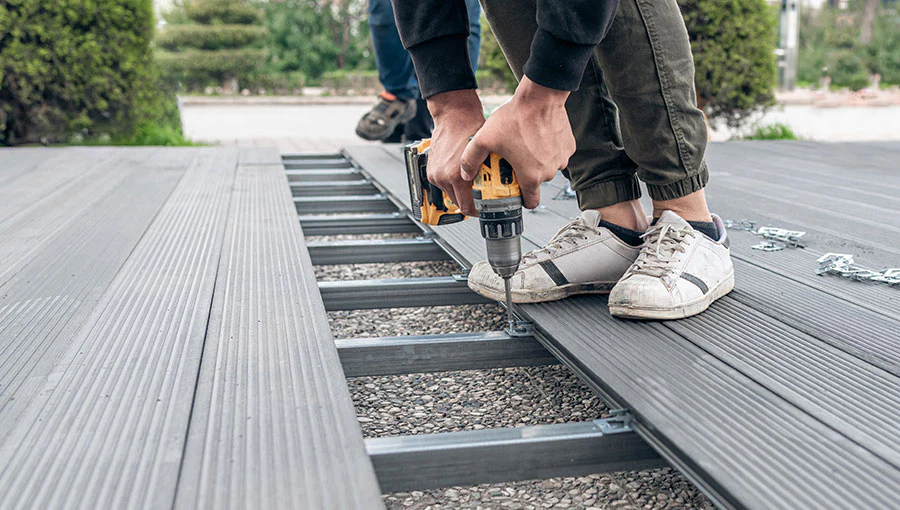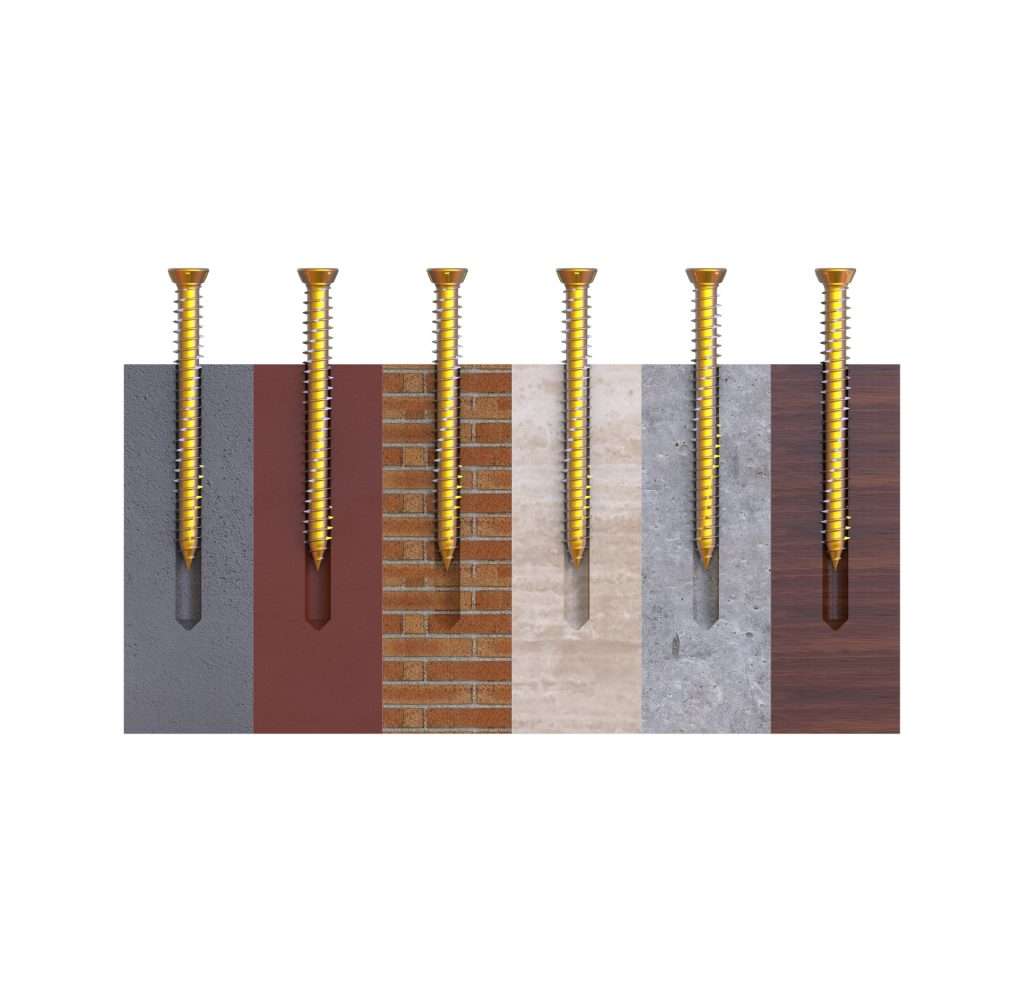Materials have undergone a remarkable transformation throughout history, shaping the spaces you inhabit today. From the introduction of natural resources like clay and timber in ancient civilisations to modern innovations such as sustainable composites and smart materials, understanding this evolution is imperative for your awareness of architectural advancements. As you explore both the benefits and challenges associated with these developments, consider how future materials will not only enhance design but also contribute to a more sustainable and resilient built environment.
Evolution of Building Materials Past Present and Future Key Takeaways:
- Historical Development: The evolution of building materials has seen a significant transition from natural materials like mud and wood to more complex constructions using concrete, steel, and glass.
- Sustainability Trends: Modern building materials are increasingly focused on sustainability, with a shift towards recycled and eco-friendly options to reduce environmental impact.
- Technological Innovations: Advancements in technology have led to the creation of smart materials, which can respond to environmental changes, enhancing building performance and energy efficiency.
- Globalisation Influence: The global exchange of ideas and materials has expanded the diversity of building materials available, allowing for a blend of traditional and modern practices in construction.
- Future Outlook: The future of building materials is predicted to focus on improved durability, reduced carbon footprint, and greater functionality, with a strong emphasis on integrating nature and technology.
Historical Overview of Building Materials
Before modern innovations transformed the construction landscape, building materials were derived from local and natural resources. Societies relied heavily on what was immediately available, using materials that would withstand the test of time. This chapter investigates into the past, illustrating how these choices shaped the architectural identity of cultures worldwide.
Ancient Materials: Stone, Wood, and Mud
Historical evidence showcases the significant role of stone, wood, and mud in ancient building practices. Stone, with its durability, was favoured for monumental structures, while wood provided flexibility and warmth. Mud, often combined with straw, formed early bricks or wattle-and-daub walls, exemplifying humanity’s innovative use of natural materials to create shelters suitable for various climates.
The Rise of Brick and Mortar
Mortar became a game changer in construction, enabling the emergence of brick as a prevalent building material. The use of fired clay bricks, bound by strong mortar, allowed for the creation of more complex and enduring structures. You can appreciate how this combination established a foundation for remarkable architectural achievements that continue to influence designs today.
Due to the increased strength and stability provided by brick and mortar, constructions became more sophisticated, paving the way for monumental buildings and intricate designs. This innovative method significantly reduced the risk of structural failure compared to previous techniques and facilitated the growth of urban environments. With efficient use of resources, brick and mortar allowed for greater flexibility in design, impacting cities and architecture for centuries to come.
Industrial Revolution and its Impact
Clearly, the Industrial Revolution marked a significant turning point in the evolution of building materials. This period saw a dramatic shift from traditional resources to more robust and versatile materials, driven by technological advancements and the need for efficient construction methods. The embrace of industrial processes enabled not only faster construction but also the ability to create larger, more complex structures, fundamentally altering the architectural landscape.
Introduction of Steel and Concrete
The introduction of steel and concrete transformed the building industry. Steel provided unmatched strength and flexibility, allowing for the construction of skyscrapers and bridges that were previously unimaginable. Meanwhile, concrete offered durability and versatility, enabling innovative designs and efficient mass production that changed how buildings were conceived and constructed.
Innovations in Glass and Prefabrication
Across architecture, innovations in glass and prefabrication have reshaped building practices. These advancements have allowed for the creation of stunning facades and increased natural light in urban environments, while prefabrication techniques facilitate quicker assembly and less waste on-site.
Hence, prefabrication has emerged as a game-changing practice in modern construction, streamlining processes and improving sustainability. With factory-built components, you can reduce waste and construction time, ensuring a more eco-friendly approach to building. Glass innovations have also expanded architectural possibilities, enabling larger windows and dynamic structures that balance aesthetics and functionality. As you consider future building practices, recognising the impact of these innovations will be imperative in your approach to sustainable and modern architecture.
Modern Building Materials
All modern building materials are characterised by innovation and a drive towards greater efficiency. From concrete’s enhanced properties to the incorporation of high-tech composites, these materials reflect the latest advances in engineering and technology. You will find that modern construction techniques leverage these materials to create structures that are not only durable and cost-effective but also aesthetically pleasing, catering to the diverse needs of today’s society.
Eco-friendly and Sustainable Options
Across the globe, the demand for eco-friendly and sustainable building materials has grown significantly. You are increasingly likely to encounter materials such as recycled steel, bamboo, and rammed earth, all of which promote sustainability. These options not only reduce environmental impact but also enhance energy efficiency in buildings, offering you a dual benefit of lower utility costs and a smaller carbon footprint.
Advancements in Smart Materials
Across varying industries, advancements in smart materials have transformed building practices. You might find materials that can respond to changes in environmental conditions, such as temperature and humidity, leading to improved comfort and energy efficiency in your buildings.
Considering the rise in technology, smart materials have gained remarkable traction in the field of architecture. These materials often possess the ability to adapt to their surroundings, using embedded sensors and actuators to modify their properties in real-time. For instance, self-healing concrete can repair its own cracks, while phase-changing materials can regulate temperature. This integration of technology not only enhances the longevity of your structures but also contributes to energy efficiency, freeing you from reliance on external energy sources and providing a more sustainable future for building practices.
Future Trends in Building Materials
For the future, building materials are set to undergo significant transformation driven by sustainability, innovation, and technological advancements. You can expect an increased focus on materials that not only meet performance requirements but also contribute positively to the environment. As building regulations evolve, you will see a shift towards more sustainable options that improve energy efficiency and reduce carbon footprints.
Biodegradable and Renewable Resources
Any discussion of future building materials must include the rise of biodegradable and renewable resources. These materials, which can decompose naturally, will revolutionise construction practices, making them greener and more sustainable. You will find a variety of innovative solutions, such as plant-based composites and recycled materials, that offer both versatility and environmental benefits.
The Role of Technology in Material Development
Future innovations in technology will fundamentally transform the way materials are developed and used in construction.
But the advancements you can expect are not merely about efficiency; they also focus on enhancing safety and performance. Tools such as 3D printing and nanotechnology will allow you to create materials that are lighter, stronger, and more resilient to environmental challenges. Additionally, the incorporation of smart technology into materials will lead to a new era where structures can adapt to changing conditions, offering improved energy management and maintenance. This convergence of technology and building materials promises a future that is not only more sustainable but also more efficient and safer for you as a resident or user.
Case Studies of Evolution
Many examples showcase the evolution of building materials over time, highlighting advancements and sustainability. Consider the following:
- Roman Concrete: Used over 2,000 years ago, it remains durable and resistant to environmental factors.
- Skyscrapers of the 20th Century: The introduction of steel frames enabled buildings like the Empire State Building to reach 1,454 feet.
- Modern Timber Innovations: Cross-laminated timber (CLT) structures, like the T3 Building in Minneapolis, utilise sustainably sourced wood to create 7-storey constructions.
- 3D-Printed Homes: Projects in Mexico show how the technology can produce homes in 24 hours at reduced costs, addressing housing shortages.
Iconic Structures: Past vs. Present
Structures reflect the technological capabilities and materials available during their times. The Great Pyramid of Giza constructed from limestone and granite around 2560 BC exemplifies the mastery of stone. In contrast, the Burj Khalifa, built in 2010, demonstrates the innovation of reinforced concrete and glass, soaring to 828 metres. This evolution showcases not only aesthetic advancement but also improvements in durability and sustainability, as modern techniques allow for greater versatility and environmental harmony.
Lessons Learned for Future Construction
Future construction can greatly benefit from understanding past successes and failures.
For instance, the unsustainable practices associated with materials like asbestos and concrete has taught you the importance of environmentally friendly alternatives. Innovations like green roofs and recycled materials highlight a shift towards sustainability. By analysing the failures of outdated methods, such as inadequate insulation leading to high energy costs, you can prioritise efficient designs that minimise environmental impact. Embracing technological advancements such as smart materials can help improve the lifespan and safety of your buildings, paving the way for a more sustainable future.
Challenges and Considerations
Your choice of building materials is not without its challenges and considerations. Factors such as sustainability, cost, availability, and compliance with regulations can complicate the decision-making process. Understanding these challenges will enable you to make informed choices that not only meet your project requirements but also promote longevity and environmental responsibility.
Environmental Impact and Regulations
One of the most significant considerations in modern construction is the environmental impact of materials. With tightening regulations aimed at reducing carbon footprints, it’s imperative to select materials that minimise harmful effects. Sustainable options like recycled or locally sourced materials not only comply with regulations but also appeal to an eco-conscious market.
Economic Factors in Material Selection
Considerations around economic factors profoundly influence your material selection. You need to evaluate costs, availability, and overall lifecycle efficiency while making choices about construction materials. A comprehensive understanding of these factors can include:
- Cost-efficiency
- Long-term viability
- Supply chain stability
Knowing the balance between initial investment and long-term savings is imperative for your project’s financial success.
Environmental and economic considerations play a key role in your selection of materials. Evaluating options involves assessing not just the initial costs, but also the durability, maintenance requirements, and potential environmental benefits. While it may be tempting to go for the cheaper option, the long-term ramifications could outweigh any immediate savings. Ultimately, ensuring that your choices are informed can lead to a more sustainable and financially sound building project. Knowing these factors supports your decision-making process effectively.
Final Words
To wrap up, your understanding of the evolution of building materials from historical practices to modern innovations provides valuable insight into the construction landscape. As you begin on future projects, considering sustainable materials and advanced technologies will not only enhance your design but also contribute to a more resilient environment. Embracing these developments ensures that your efforts align with contemporary needs while laying the groundwork for future advancements in construction.
Evolution of Building Materials Past Present and Future FAQ
Q: What are the earliest building materials used in construction?
A: The earliest building materials included stone, mud, and timber. Ancient civilisations primarily relied on locally available resources. For instance, the Egyptians utilised limestone and granite for their monumental structures, while Mesopotamians often used mud bricks. These materials were not only durable but also abundant, allowing for the construction of lasting edifices that showcased the architectural ingenuity of the time.
Q: How have modern building materials evolved compared to traditional ones?
A: Modern building materials have significantly advanced in terms of technology, sustainability, and versatility. Innovations such as reinforced concrete, steel, and glass have transformed construction methods, allowing for taller, more complex structures. Additionally, there is a growing emphasis on sustainable materials, such as bamboo, recycled steel, and insulated concrete forms, which are designed to reduce environmental impact. Contrastingly, traditional materials tended to emphasise local sourcing and were limited by available technology.
Q: What does the future hold for building materials in construction?
A: The future of building materials is expected to focus on sustainability, resilience, and smart technologies. Researchers are exploring options like self-healing concrete, biodegradable materials, and 3D printing technologies that can minimise waste. Additionally, the integration of smart materials that adapt to environmental changes and improve energy efficiency will likely become more prevalent. This shift aims to create buildings that are not only environmentally friendly but also more adaptable to changing climates and urban needs.



